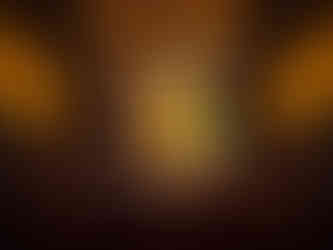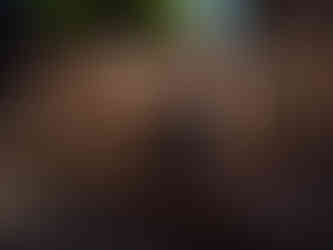Fujifilm GFX50s my thoughts
- Haze Kware
- Aug 16, 2019
- 6 min read
Updated: Mar 13, 2022
as a Dance & Circus photographer
I am going, to be honest... I never looked at Fuji cameras seriously. This is when I realize marketing is really powerful... Canon here and there, Nikon and now Sony is hitting really really hard with amazing new releases... and everywhere on YouTube, I see videos of people switching back and forth mainly between these 3 brands.
I first heard about the Fuji XT2 in late 2016 and passed through the Fuji booth in early 2017 during the Salon de la photo in Paris. I quickly saw the Fuji GFX 50s, a few huge prints showing how many details this camera was able to render and that's it... I wasn't curious enough to actually go near and touch the camera.
We are now in 2019 and a local store in Toulouse was proposing a workshop with the 50s and the 50r (the rangefinder version). And this time I was curious enough to go there and see what this was all about.
So Medium-format... Hum what is that? For me, the "medium" format meant, a bigger sensor, amazing images, but a slow system, and limited autofocus options. A camera only a few can afford that was built for studio work.
But in the mouth of the lucky ones who can afford to work with such systems, "Medium" format delivers images that that full-frame sensors just cannot match.
The sensor of the gfx50 is smaller than the Phase one H6D... This might explain the almost attractive price of the camera.

The sensor is still (roughly) 68% larger than full-frame so the question is: What does this camera offer that full-frame bodies cannot. Can we really feel and see the difference in terms of image quality... and is it worth the price? Do I need such a system... I think this last question is the most important one!
The GFX50s sensor for some is old technology now. The camera started shipping in February 2017 almost 2 years and a half later, is this camera still relevant?
When considering a new tool for my work, my only question is will this tool boost, will it stimulate my creativity, and help me make the images I want efficiently?
So this is really personal, and when doing your own research you have to keep this in mind. We all work differently, we all have different goals, and different tastes you cannot choose a camera based on somebody else's experience.
So I reached out to Fujifilm France and asked them if I could get my hands on the camera and use it in my work for some time. Renting it for a weekend is nice, but if I really want to know what it's capable of I need to have it for at least a week. To my surprise, they said yes! They sent it to me without asking me anything in return. My plan was simple, use the GFX50s as my main camera, not for 1 but for 2 weeks.
Shipped with the camera and to my demand, 3 lenses: the Fujifilm GF 23mm F4 R WR, the GF 32-64mm f/4 R LM WR, and the almighty GF 110mm f/2 R LM WR.
Cyd Sailor
Théatre de la Pergola
Fujifilm GFX50s + GF 32-64mm f/4 R LM WR Broncolor Siros L (800ws) 1/125sec f4 ISO1250 at 32mm
I had to go up to ISO 1250 on this private session, you can see in the BTS video how poor the light was inside the theater. I really like the result, the noise is there but you have to zoom in to see it. I would even add that the noise almost feels "organic" it is almost like film, it doesn't feel digital and is not distracting...
Hélène Bernadou
Château Pape Clément
Fujifilm GFX50s + GF 110mm f/2 R LM WR Broncolor Siros L (800ws) 1/125sec f2 ISO100 at 110mm

Hélène Bernadou
Château Pape Clément
Fujifilm GFX50s + GF 110mm f/2 R LM WR Broncolor Siros L (800ws) 1/125sec f2 ISO100 at 110mm
The GF 110mm f/2 R LM WR is maybe my favorite lens of the 3 in the full-frame world it's almost like an 85mm lens. Awesome for portraits but not only, it delivers unique images and a distinctive look wide open.
Hélène Bernadou
Château Pape Clément
Fujifilm GFX50s + GF 23mm F4 R WR Broncolor Siros L (800ws) 1/125sec f4 ISO800 at 23mm

Laura Viaud
Académie des sciences et belles lettres de Bordeaux
Fujifilm GFX50s + GF 23mm F4 R WR Broncolor Siros L (800ws) 1/125sec f4 ISO100 at 23mm

I love Wide-angle lenses, and I was a bit disappointed when I discovered that they didn't have a lens wider than 23mm ( roughly 18mm in Full-frame world). It's a great lens, I managed to make it mine and use it in my work, but I really hope Fuji will release something wider... Fingers crossed!
Laura Viaud
Académie des sciences et belles lettres de Bordeaux
Fujifilm GFX50s + GF 32-64mm f/4 R LM WR Broncolor Siros L (800ws) 1/125sec f4 ISO160 at 32mm
So what did I like and what did I hate?
1. Ease of use 2. Physical dials and general ergonomy 3. the quality of the overall build 4. Hyper Sync 5. And of course the images...
What I hate (the word is too strong) what I did not like:
1. Poor performance in continuous AF 2. Inaccurate Eye AF beyond close-ups 3. 3fps (this camera is definitely not a sports camera) 4. Flash sync limit at 1/125s
I won't talk about the video mode, because it's not great on this camera and I don't think the GFX50 was made for filmmakers.
So what about these 14bits raw files?
For all of you out there that love to underexpose to keep the details in the highlights to get the most out of a really contrasted scene, this camera gives you a lot to work on in the post

The dynamic range and the robustness of the RAW files are impressive. I love the colors straight out of the camera but that's a personal thing. And I love the way it renders skin. The look is different and feels different, but for this, you really have to experience it yourself.
Loïs Bret
Bordeaux
Fujifilm GFX50s + GF 32-64mm f/4 R LM WR Broncolor Siros L (800ws) 1/125sec f4 ISO100 at 36.2mm

And for those who wondered if I ever tested it without my flashes:
Margaux
Toulouse
Fujifilm GFX50s + GF 110mm f/2 R LM WR 1/400sec f2 ISO100 at 110mm

Virginie Baïet
Toulouse
Fujifilm GFX50s + GF 110mm f/2 R LM WR 1/1000sec f4.5 ISO100 at 110mm
Fanny George
Presqu'ïle Malraux
Fujifilm GFX50s + GF 110mm f/2 R LM WR 1/400sec f2 ISO100 at 110mm

In terms of megapixels, Sony just announced the A7RIV that packs a full-frame 61mp sensor, 10fps, improved eye autofocus, and 15 stops of dynamic range.
Full-frame cameras started this pixel war long ago, canon has the 50mp 5DSR, and rumors say that a high megapixel camera is on the way, apparently planned for 2020. Nikon is preparing something too, a Z8 with basically the same sensor as the A7RIV is maybe on the way.
So let's forget about the megapixels, even though coming from a Canon 5D Mark IV the details are very welcome! Especially If you are doing commercial work, editorials, or if you are working with annoying clients. You know who they are, the ones that crop the hell out of your photos. With this amount of megapixels, you can crop up to 50% and still keep enough details for a printable photo.
The format is different too, the sensor is 68% larger than standard full-frame sensors, but the GFX50s also uses a 4:3 aspect ratio rather than the 3:2 used on full-frame.
I loved having this camera during the past 2 weeks... I even changed my way of working, this system taught me to slow down, to look more at the details, and think before pressing that shutter. I end up shooting less but having more keepers.
My only concern was for all my action shots, this camera, for sure is not an action camera. If your subject is moving too fast you will struggle to get a nice clean focused shot with this system. For all the rest, this camera is a beast, even 2 years and a half after its release.
Most of the things I miss on the GFX50 were incorporated in the big brother, the almighty GFX100... I hope to get my hands on this one soon!
IBIS
Better Eye AF
phase detect and contrast AF
Better EVF
and of course, I will not mention the 102mp
The Fujifilm GFX100 even offers internal UHD and DCI 4K30p video recording at up 4:2:0 10-bit, as well as 4K30p 4:2:2 10-bit via HDMI output, both at up to 400 Mb/s.
But of course, this comes with a price, at over 10k, it is not a camera for everyone.
So my conclusion will be very simple and straightforward:
Dear Fuji, when is the GFX 50s mark II coming out?






























Comments